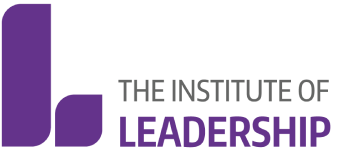Authenticity and Trust
Trusting Relationships
Leadership and Trust

High-Trust Environments
High-trust environments are commonly associated with organisations that demonstrate the following characteristics:
- Employees are challenged to stretch themselves, but are not given unachievable tasks
- Employees have a high level of discretion in their working practice and mistakes are allowed
- Employees are respected for their skills and assigned roles where they can make best use of them
- There is openness in communication and information is broadly shared
- Employees are expected to challenge and question
- Leaders put effort into building relationships
- Employees are allowed to develop additional skills
- Leaders are prepared to ask for help from employees
- Contribution, excellence and success are recognised and rewarded
Organisations such as Google are recognised as high trust environments with innovations such as letting employees take breaks when they wish, having ‘chillout’ and games areas within their offices, and even allowing staff to chose their own job titles. Senior engineers in Google can also allocate 20% of their working time to their own ideas and innovations. Whilst this latter piece of trust may at first appear to be a risk of resources, highly successful (and profitable) developments have come from it, including Google Earth (Battelle, 2005).
Building A High Trust Environment
There are a number of immediate steps you can take to start developing trust from your employees:
- By example - show that you trust those around you
- Look for win:win in relationships
- Do not procrastinate or avoid issues
- Be honest and share information openly (including bad news)
- Respond fairly to requests and do not make unachievable demands
- Respect other people’s time and views
Trust is a relationship issue. It cannot just be expected, it must be earnt. Of course, all the benefits of building trust within an organisation can apply equally to relationships between organisations in a business to business context.
References
Battelle, J. (2005) ‘The 70 percent solution’. CNN Money [online].
Available from: https://money.cnn.com/2005/11/28/news/newsmakers/schmidt_biz20_1205/ [Accessed 12 Aug 2022]
Covey, S. (2006). The Speed of Trust, the one thing that changes everything. London: Simon and Schuster.
Drucker, P. (1999) Managing oneself. Harvard Business Review [online].
Available from: https://hbr.org/2005/01/managing-oneself [Accessed 12 Aug 2022]
Dietz, G. (2016) Developing high trust relationships. Open Learn, Open University.
Powell, C. (2003) Why Leadership Matters in the Department of State [speech].
Available from: https://govleaders.org/powell-speech.htm [Accessed 12 Aug 2022]
PwC (2016) 19th Annual Global CEO Survey.
Available from: https://www.pwc.com/gx/en/ceo-survey/2016/landing-page/pwc-19th-annual-global-ceo-survey.pdf [Accessed 12 Aug 2022]
Zak, P. (2017) The Neuroscience of Trust. Harvard Business Review [online].
Available from: https://hbr.org/2017/01/the-neuroscience-of-trust [Accessed 12 Aug 2022]
Further Resources


